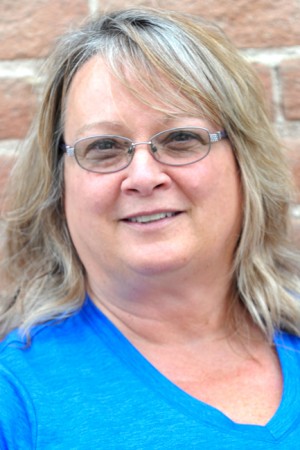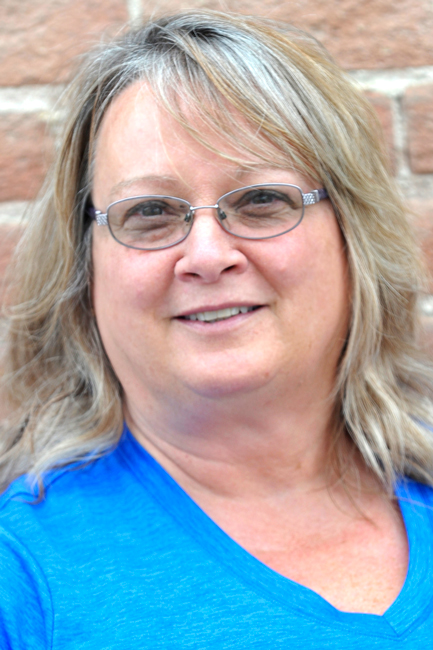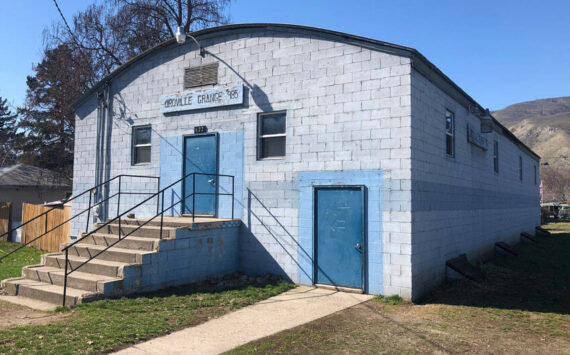

Recalls 20 years with Oroville Housing Authority
OROVILLE – She says it’s hard to let go, but after 20 years Cheryl Lewis has stepped down as the Executive Director of the Oroville Housing Authority.
“It’s been really hard to let go… it’s been difficult to go in and watch someone else do my job,” said Lewis, who worked her first two and a half years at the OHA at no pay.
“Dave Taber and Steve Stewart recruited me from the warehouse where I was working. I had done some rentals, but no property management. I felt this was a way to get in on the ground floor and work my way up,” she said.
In addition to those first couple of years working for free, she also was without an office.
“Community Action had a small office in Oroville toward the end of those two years and let me share theirs,” said Lewis.
She said a representative of the Office of Rural & Farmworker Housing (ORFH); Taber, an Oroville orchardist and Vic Westlund, a local businessman, went to the city’s housing authority in the early 1990s about developing farmworker housing. At that time the Oroville Housing Authority (OHA) was not as active as it is now, according to Lewis. She said local orchardists were finding it hard to keep up with regulations regarding the housing they offered on their farms and were seeking an alternative.
“It was getting harder for the growers to meet government standards and the inspectors were getting too demanding,” she explained. “Developing our own farmworker housing was a way of having low income farmworkers get off the orchards and rent a place to live while they worked the crops.”
Providing farmworker housing was felt to be especially important in the Oroville area because it was “at the end of the line” on the routes that migrant workers travelled following the crops.
“The city allocated part of JoAnne Denney’s time to the housing authority until it got to be too much, that’s when they advertised for an executive director,” Lewis said. “The city had actually formed the housing authority in the first place to develop farmworker housing.”
Lewis recalls the order in which the OHA developed farm and agricultural worker housing and low-income housing in general over the last 20 years:
The first project to hit the ground for the OHA was the Similkameen Apartments in 1999/2000, according to Lewis. The apartments are in two locations, on Golden Street in the south end of town and behind Prince’s Center on Westlake Avenue.
“By December of 2000 we had met all our requirements and all 21 units of the Similkameen Apartments were rented,” she said.
To qualify to live in the Similkameen residents must have a family income where they earn at least $3000 working in agriculture.
“That doesn’t mean they have to be on the farm, they could also be workers in the warehouse, making a living working on the packing line for example,” she said. “They also have to be at or below 40 percent of the median income for the size of their family.”
The Similkameen Apartments were financed with help from investors who put up the construction money through the National Equity Fund.
“Every year they would get to claim a tax credit and it was our responsibility to operate and makes sure no one living there did not meet the guidelines,” said Lewis. “Our partners got their equity back in 10 years through the tax credits, but they had a 15-year obligation on the partnership. So last year the partnership was finished and we (OHA) became the sole owners of the apartments.”
Lewis said that by being sole owners it saves a little on paperwork, but it is basically operated the same as it always has been.
“It makes it nice that we have no mortgage or loans on the property and that’s why we can charge lower rents. Since there was also federal money involved we have to abide by rules like there are no drugs allowed on the premises, that includes marijuana,” she said.
In April of 2001 the Oroville Garden Apartments, which were originally built for low income seniors and disabled people, were closed and the OHA purchased them.
“It is still for senior/disabled low-income. The rents are subsidized by the USDA (US Department of Agriculture),” said Lewis. “We’re still not sure why they were originally built with two stories.”
That same year the housing authority purchased several trailers and created the farmworkers camp. Each trailer sleeps four people and they have communal cooking facilities, showers and restroom facilities.
“Since the recreation room was turned into a bunkhouse, the ‘shelter’ now has 105 beds. And we still have to turn people away during cherry harvest,” she said.
During the winter months it is used as a homeless shelter.
In 2012 the OHA built the Harvest Park which is made up of nine units which house eight people in two bedrooms and one unit which houses four in one bedroom for a total of 76 people. Each of the two bedroom units has a double kitchen and two rooms with a toilet in each, two with a shower and two with a bath. The Harvest Park also has laundry facilities, a play area for families with children, as well as playfields and outdoor basketball courts. There are also solar panels on the roofs of the units for which the project earns energy credits.
The Harvest Park was financed through the USDA, mostly through a grant, according to Lewis.
Several orchardists now arrange for guest workers to come in and fill the gaps in the labor force during the apple, pear and cherry harvests through the federal government’s HSA program. While the rules governing the Harvest Park do not allow these seasonal workers to be housed there, many are housed in the trailers and the bunkhouse, now called “The Shelter” by the OHA.
The former executive director says over the past 20 years her favorite part has been working with the elderly.
“I’ve especially enjoyed working with the people at the Gardens and knowing we’ve made a difference in their lives. Some of the people would otherwise be left homeless and we gave them a place to live. If I was 70 and left on the street I would hope that someone would come along and help me find a place to live,” she said.
“I also think the shelter and Harvest Park are wonderful assets to growers and the community. It gives the growers a way to attract labor to the area, as well as an inexpensive place to house them. The workers also come here and spend money in the community,” she said.
Cheryl Lewis joins her husband Jan in retirement. He is a former law enforcement officer for Oroville, Okanogan County and the North Central Washington Narcotics Task Force. Recently he retired as the Chief of Police for Republic, Wash. after working there for three years.
“Jan and I bought a place in Oregon by the beach and we are going to spend some time there, as well as going to see my grandkids,” she said. “We love Oroville and will spend lots of time here in the house we recently finished building.”
The Lewis’ have four grandchildren that they will be visiting – Jan Jr. has one grandchild with him and he recently moved to Montana which she says will be closer and Brandon has three grandchildren and he lives in Colorado.
In addition to traveling she says she also likes to quilt and will get back into stained glass making.
“I have stained glass shop that I haven’t been into in some time,” she said.
The couple are originally from Federal Way, Wash.
“I met Jan there and his dad was teaching at Federal Way High School. We went to a new kind of experimental high school there. That lasted about a year and Jan and I left, finished school and got married,” she said.
He later took a job with the Concrete Police Department.
“When you worked for the Concrete Police Department your wife was your dispatcher at night and on weekends,” recalls Lewis.
The couple moved to Oroville in 1985 when he got a job with the Oroville Police Department.
“He wanted to make the move because his grandparents lived here and his grandpa had a rental house he wanted us to buy,” she said.
Her first job in Oroville was with Security Pacific Bank, later working as a bookkeeper for Kitsan which had been contracted by the Bureau of Reclamation to install the pressurized irrigation system to replace the ditch and flume system. She then went to work at several apple warehouses – Cariboo Growers, Lake O Packers, Appleway and Gold Digger Apples. It was then that she was approached by Taber and Stewart about coming to work for the Housing Authority.







